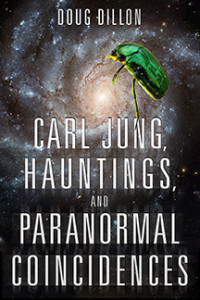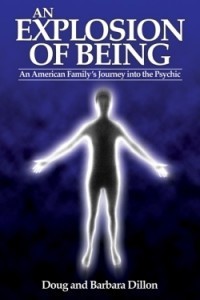Doug Dillon's Blog, page 54
October 28, 2015
Francis Scott Key and the Slave Ship Antelope
Excellent addition to an important field of study.
Book review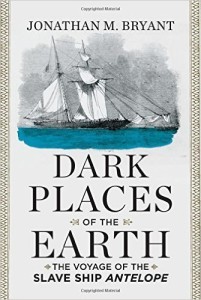 of: Dark Places of the Earth: The Voyage of the Slave Ship Antelope
of: Dark Places of the Earth: The Voyage of the Slave Ship Antelope
Author: Jonathan M. Bryant, professor of history at Georgia Southern University specializing in slavery, emancipation, and constitutional law.
Publisher: Liveright Publishing Group, a division of W.W. Norton & Company
Formats: Hardcover, eBook, Audio CD
Details: 376 pages with 47 pages of notes. Includes some drawings and photographs.
Johnathan Bryant does a very skilful job of shedding a bright light on a little known but extremely important event in American History. Meticulously researched, the author’s efforts show in graphic detail the plight of over 300 Africans brought to the shores of the United States by the slave ship Antelope. And in the process, he lays before readers the intricate legal wrangling that ended in Supreme Court rulings solidifying the rights of property over the natural rights of human beings, rulings that lasted for thirty-five years.
As the book title indicates, this is a dark tale, one that throws readers directly into the horrors of the slave trade and the institution of slavery as practiced during the early years of the republic. Author Bryant’s simple statistics of what remained of the Antelope’s starving and diseased human cargo when it finally arrived in Savannah, Georgia during the year 1820 give stark and concise testimony to the brutality of such transatlantic profit seeking voyages:
• Out of 331 people originally captured and put aboard the Antelope, only 258 remained alive – a 22% loss of life.
• 83% of the captives were under the age of 20.
• The average age of all the captives was 14.
• 106 were between the ages of 5 and 10.
• 8 were between the ages of 2 and 5. 2 and 5 (that is an intentional factual repeat)
For almost eight years after landing in the United States, the captives languished in servitude on Savannah plantations as if they had been bought and sold as slaves, which they were not. And after those eight years, most of those people who actually survived were legally enslaved and sent to Florida by Supreme Court rulings. Only a small group ended up being sent back to Africa where they faced severe hardships, disease and attack by the nearby native population.
Jonathan Bryant’s story of the multiple legal battles that caused the captives to wait nearly eight years is fascinating and so full of detail as to be almost overwhelming. But true to presenting the facts as he found them, the author offers readers these historical events in step-by-step fashion in order to leave no doubt about what happened. His 47 pages of notes at the end of the book speak to the incredible depth of his research.
One of the most telling scenes is when the Antelope case finally arrives at the Supreme Court of the United States in 1825, five years after the captives set foot in Georgia. The legendary John Marshall was Chief Justice and four of the justices were slave owners. The attorney for the supposed owners of the captives, Spanish and Portuguese citizens, was a slave owner as well. Enter the attorney for the government of United States trying to free the captives, Francis Scott Key. The same F.S. Key of the Star-Spangled Banner fame had slaves of his own. Slave ownership stood out on that day as a vivid yet unofficial finger pressing on the scales of justice.
This author’s work is beautifully organized, well written and thoroughly documented. It is an important scholarly work and should be read by those deeply interested in slavery, the slave trade, constitutional law, international law, and American politics during the first quarter of the 19th century.
Useful Links
YouTube video – interview with the author
October 22, 2015
John Marshall, Slavery & the Slave Trade
Excellent addition to an important field of study.
Book review of: Dark Places of the Earth: The Voyage of the Slave Ship Antelope
of: Dark Places of the Earth: The Voyage of the Slave Ship Antelope
Author: Jonathan M. Bryant, professor of history at Georgia Southern University specializing in slavery, emancipation, and constitutional law.
Publisher: Liveright Publishing Group, a division of W.W. Norton & Company
Formats: Hardcover, eBook, Audio CD
Details: 376 pages with 47 pages of notes. Includes some drawings and photographs.
Johnathan Bryant does a very skilful job of shedding a bright light on a little known but extremely important event in American History. Meticulously researched, the author’s efforts show in graphic detail the plight of over 300 Africans brought to the shores of the United States by the slave ship Antelope. And in the process, he lays before readers the intricate legal wrangling that ended in Supreme Court rulings solidifying the rights of property over the natural rights of human beings, rulings that lasted for thirty-five years.
As the book title indicates, this is a dark tale, one that throws readers directly into the horrors of the slave trade and the institution of slavery as practiced during the early years of the republic. Author Bryant’s simple statistics of what remained of the Antelope’s starving and diseased human cargo when it finally arrived in Savannah, Georgia during the year 1820 give stark and concise testimony to the brutality of such transatlantic profit seeking voyages:
• Out of 331 people originally captured and put aboard the Antelope, only 258 remained alive – a 22% loss of life.
• 83% of the captives were under the age of 20.
• The average age of all the captives was 14.
• 106 were between the ages of 5 and 10.
• 8 were between the ages of 2 and 5. 2 and 5 (that is an intentional factual repeat)
For almost eight years after landing in the United States, the captives languished in servitude on Savannah plantations as if they had been bought and sold as slaves, which they were not. And after those eight years, most of those people who actually survived were legally enslaved and sent to Florida by Supreme Court rulings. Only a small group ended up being sent back to Africa where they faced severe hardships, disease and attack by the nearby native population.
Jonathan Bryant’s story of the multiple legal battles that caused the captives to wait nearly eight years is fascinating and so full of detail as to be almost overwhelming. But true to presenting the facts as he found them, the author offers readers these historical events in step-by-step fashion in order to leave no doubt about what happened. His 47 pages of notes at the end of the book speak to the incredible depth of his research.
One of the most telling scenes is when the Antelope case finally arrives at the Supreme Court of the United States in 1825, five years after the captives set foot in Georgia. The legendary John Marshall was Chief Justice and four of the justices were slave owners. The attorney for the supposed owners of the captives, Spanish and Portuguese citizens, was a slave owner as well. Enter the attorney for the government of United States trying to free the captives, Francis Scott Key. The same F.S. Key of the Star-Spangled Banner fame had slaves of his own. Slave ownership stood out on that day as a vivid yet unofficial finger pressing on the scales of justice.
This author’s work is beautifully organized, well written and thoroughly documented. It is an important scholarly work and should be read by those deeply interested in slavery, the slave trade, constitutional law, international law, and American politics during the first quarter of the 19th century.
Useful Links
YouTube video – interview with the author
October 16, 2015
Francis Scott Key, Slavery & the Slave Trade
Excellent addition to an important field of study.
Book review of: Dark Places of the Earth: The Voyage of the Slave Ship Antelope
of: Dark Places of the Earth: The Voyage of the Slave Ship Antelope
Author: Jonathan M. Bryant, professor of history at Georgia Southern University specializing in slavery, emancipation, and constitutional law.
Publisher: Liveright Publishing Group, a division of W.W. Norton & Company
Formats: Hardcover, eBook, Audio CD
Details: 376 pages with 47 pages of notes. Includes some drawings and photographs.
Johnathan Bryant does a very skilful job of shedding a bright light on a little known but extremely important event in American History. Meticulously researched, the author’s efforts show in graphic detail the plight of over 300 Africans brought to the shores of the United States by the slave ship Antelope. And in the process, he lays before readers the intricate legal wrangling that ended in Supreme Court rulings solidifying the rights of property over the natural rights of human beings, rulings that lasted for thirty-five years.
As the book title indicates, this is a dark tale, one that throws readers directly into the horrors of the slave trade and the institution of slavery as practiced during the early years of the republic. Author Bryant’s simple statistics of what remained of the Antelope’s starving and diseased human cargo when it finally arrived in Savannah, Georgia during the year 1820 give stark and concise testimony to the brutality of such transatlantic profit seeking voyages:
• Out of 331 people originally captured and put aboard the Antelope, only 258 remained alive – a 22% loss of life.
• 83% of the captives were under the age of 20.
• The average age of all the captives was 14.
• 106 were between the ages of 5 and 10.
• 8 were between the ages of 2 and 5. 2 and 5 (that is an intentional factual repeat)
For almost eight years after landing in the United States, the captives languished in servitude on Savannah plantations as if they had been bought and sold as slaves, which they were not. And after those eight years, most of those people who actually survived were legally enslaved and sent to Florida by Supreme Court rulings. Only a small group ended up being sent back to Africa where they faced severe hardships, disease and attack by the nearby native population.
Jonathan Bryant’s story of the multiple legal battles that caused the captives to wait nearly eight years is fascinating and so full of detail as to be almost overwhelming. But true to presenting the facts as he found them, the author offers readers these historical events in step-by-step fashion in order to leave no doubt about what happened. His 47 pages of notes at the end of the book speak to the incredible depth of his research.
One of the most telling scenes is when the Antelope case finally arrives at the Supreme Court of the United States in 1825, five years after the captives set foot in Georgia. The legendary John Marshall was Chief Justice and four of the justices were slave owners. The attorney for the supposed owners of the captives, Spanish and Portuguese citizens, was a slave owner as well. Enter the attorney for the government of United States trying to free the captives, Francis Scott Key. The same F.S. Key of the Star-Spangled Banner fame had slaves of his own. Slave ownership stood out on that day as a vivid yet unofficial finger pressing on the scales of justice.
This author’s work is beautifully organized, well written and thoroughly documented. It is an important scholarly work and should be read by those deeply interested in slavery, the slave trade, constitutional law, international law, and American politics during the first quarter of the 19th century.
Useful Links
YouTube video – interview with the author
October 10, 2015
Slavery, the Slave Trade & Savannah, Georgia
Excellent addition to an important field of study.
Book review of: Dark Places of the Earth: The Voyage of the Slave Ship Antelope
of: Dark Places of the Earth: The Voyage of the Slave Ship Antelope
Author: Jonathan M. Bryant, professor of history at Georgia Southern University specializing in slavery, emancipation, and constitutional law.
Publisher: Liveright Publishing Group, a division of W.W. Norton & Company
Formats: Hardcover, eBook, Audio CD
Details: 376 pages with 47 pages of notes. Includes some drawings and photographs.
Johnathan Bryant does a very skilful job of shedding a bright light on a little known but extremely important event in American History. Meticulously researched, the author’s efforts show in graphic detail the plight of over 300 Africans brought to the shores of the United States by the slave ship Antelope. And in the process, he lays before readers the intricate legal wrangling that ended in Supreme Court rulings solidifying the rights of property over the natural rights of human beings, rulings that lasted for thirty-five years.
As the book title indicates, this is a dark tale, one that throws readers directly into the horrors of the slave trade and the institution of slavery as practiced during the early years of the republic. Author Bryant’s simple statistics of what remained of the Antelope’s starving and diseased human cargo when it finally arrived in Savannah, Georgia during the year 1820 give stark and concise testimony to the brutality of such transatlantic profit seeking voyages:
• Out of 331 people originally captured and put aboard the Antelope, only 258 remained alive – a 22% loss of life.
• 83% of the captives were under the age of 20.
• The average age of all the captives was 14.
• 106 were between the ages of 5 and 10.
• 8 were between the ages of 2 and 5. 2 and 5 (that is an intentional factual repeat)
For almost eight years after landing in the United States, the captives languished in servitude on Savannah plantations as if they had been bought and sold as slaves, which they were not. And after those eight years, most of those people who actually survived were legally enslaved and sent to Florida by Supreme Court rulings. Only a small group ended up being sent back to Africa where they faced severe hardships, disease and attack by the nearby native population.
Jonathan Bryant’s story of the multiple legal battles that caused the captives to wait nearly eight years is fascinating and so full of detail as to be almost overwhelming. But true to presenting the facts as he found them, the author offers readers these historical events in step-by-step fashion in order to leave no doubt about what happened. His 47 pages of notes at the end of the book speak to the incredible depth of his research.
One of the most telling scenes is when the Antelope case finally arrives at the Supreme Court of the United States in 1825, five years after the captives set foot in Georgia. The legendary John Marshall was Chief Justice and four of the justices were slave owners. The attorney for the supposed owners of the captives, Spanish and Portuguese citizens, was a slave owner as well. Enter the attorney for the government of United States trying to free the captives, Francis Scott Key. The same F.S. Key of the Star-Spangled Banner fame had slaves of his own. Slave ownership stood out on that day as a vivid yet unofficial finger pressing on the scales of justice.
This author’s work is beautifully organized, well written and thoroughly documented. It is an important scholarly work and should be read by those deeply interested in slavery, the slave trade, constitutional law, international law, and American politics during the first quarter of the 19th century.
Useful Links
YouTube video – interview with the author
October 5, 2015
Research – Slavery, the Slave Trade & the Supreme Court
Excellent addition to an important field of study.
Book review of: Dark Places of the Earth: The Voyage of the Slave Ship Antelope
of: Dark Places of the Earth: The Voyage of the Slave Ship Antelope
Author: Jonathan M. Bryant, professor of history at Georgia Southern University specializing in slavery, emancipation, and constitutional law.
Publisher: Liveright Publishing Group, a division of W.W. Norton & Company
Formats: Hardcover, eBook, Audio CD
Details: 376 pages with 47 pages of notes. Includes some drawings and photographs.
Johnathan Bryant does a very skilful job of shedding a bright light on a little known but extremely important event in American History. Meticulously researched, the author’s efforts show in graphic detail the plight of over 300 Africans brought to the shores of the United States by the slave ship Antelope. And in the process, he lays before readers the intricate legal wrangling that ended in Supreme Court rulings solidifying the rights of property over the natural rights of human beings, rulings that lasted for thirty-five years.
As the book title indicates, this is a dark tale, one that throws readers directly into the horrors of the slave trade and the institution of slavery as practiced during the early years of the republic. Author Bryant’s simple statistics of what remained of the Antelope’s starving and diseased human cargo when it finally arrived in Savannah, Georgia during the year 1820 give stark and concise testimony to the brutality of such transatlantic profit seeking voyages:
• Out of 331 people originally captured and put aboard the Antelope, only 258 remained alive – a 22% loss of life.
• 83% of the captives were under the age of 20.
• The average age of all the captives was 14.
• 106 were between the ages of 5 and 10.
• 8 were between the ages of 2 and 5. 2 and 5 (that is an intentional factual repeat)
For almost eight years after landing in the United States, the captives languished in servitude on Savannah plantations as if they had been bought and sold as slaves, which they were not. And after those eight years, most of those people who actually survived were legally enslaved and sent to Florida by Supreme Court rulings. Only a small group ended up being sent back to Africa where they faced severe hardships, disease and attack by the nearby native population.
Jonathan Bryant’s story of the multiple legal battles that caused the captives to wait nearly eight years is fascinating and so full of detail as to be almost overwhelming. But true to presenting the facts as he found them, the author offers readers these historical events in step-by-step fashion in order to leave no doubt about what happened. His 47 pages of notes at the end of the book speak to the incredible depth of his research.
One of the most telling scenes is when the Antelope case finally arrives at the Supreme Court of the United States in 1825, five years after the captives set foot in Georgia. The legendary John Marshall was Chief Justice and four of the justices were slave owners. The attorney for the supposed owners of the captives, Spanish and Portuguese citizens, was a slave owner as well. Enter the attorney for the government of United States trying to free the captives, Francis Scott Key. The same F.S. Key of the Star-Spangled Banner fame had slaves of his own. Slave ownership stood out on that day as a vivid yet unofficial finger pressing on the scales of justice.
This author’s work is beautifully organized, well written and thoroughly documented. It is an important scholarly work and should be read by those deeply interested in slavery, the slave trade, constitutional law, international law, and American politics during the first quarter of the 19th century.
Useful Links
YouTube video – interview with the author
October 3, 2015
Savannah, Georgia & the Slave Ship Antelope
Excellent addition to an important field of study.
Book review of: Dark Places of the Earth: The Voyage of the Slave Ship Antelope
of: Dark Places of the Earth: The Voyage of the Slave Ship Antelope
Author: Jonathan M. Bryant, professor of history at Georgia Southern University specializing in slavery, emancipation, and constitutional law.
Publisher: Liveright Publishing Group, a division of W.W. Norton & Company
Formats: Hardcover, eBook, Audio CD
Details: 376 pages with 47 pages of notes. Includes some drawings and photographs.
Johnathan Bryant does a very skilful job of shedding a bright light on a little known but extremely important event in American History. Meticulously researched, the author’s efforts show in graphic detail the plight of over 300 Africans brought to the shores of the United States by the slave ship Antelope. And in the process, he lays before readers the intricate legal wrangling that ended in Supreme Court rulings solidifying the rights of property over the natural rights of human beings, rulings that lasted for thirty-five years.
As the book title indicates, this is a dark tale, one that throws readers directly into the horrors of the slave trade and the institution of slavery as practiced during the early years of the republic. Author Bryant’s simple statistics of what remained of the Antelope’s starving and diseased human cargo when it finally arrived in Savannah, Georgia during the year 1820 give stark and concise testimony to the brutality of such transatlantic profit seeking voyages:
• Out of 331 people originally captured and put aboard the Antelope, only 258 remained alive – a 22% loss of life.
• 83% of the captives were under the age of 20.
• The average age of all the captives was 14.
• 106 were between the ages of 5 and 10.
• 8 were between the ages of 2 and 5. 2 and 5 (that is an intentional factual repeat)
For almost eight years after landing in the United States, the captives languished in servitude on Savannah plantations as if they had been bought and sold as slaves, which they were not. And after those eight years, most of those people who actually survived were legally enslaved and sent to Florida by Supreme Court rulings. Only a small group ended up being sent back to Africa where they faced severe hardships, disease and attack by the nearby native population.
Jonathan Bryant’s story of the multiple legal battles that caused the captives to wait nearly eight years is fascinating and so full of detail as to be almost overwhelming. But true to presenting the facts as he found them, the author offers readers these historical events in step-by-step fashion in order to leave no doubt about what happened. His 47 pages of notes at the end of the book speak to the incredible depth of his research.
One of the most telling scenes is when the Antelope case finally arrives at the Supreme Court of the United States in 1825, five years after the captives set foot in Georgia. The legendary John Marshall was Chief Justice and four of the justices were slave owners. The attorney for the supposed owners of the captives, Spanish and Portuguese citizens, was a slave owner as well. Enter the attorney for the government of United States trying to free the captives, Francis Scott Key. The same F.S. Key of the Star-Spangled Banner fame had slaves of his own. Slave ownership stood out on that day as a vivid yet unofficial finger pressing on the scales of justice.
This author’s work is beautifully organized, well written and thoroughly documented. It is an important scholarly work and should be read by those deeply interested in slavery, the slave trade, constitutional law, international law, and American politics during the first quarter of the 19th century.
Useful Links
YouTube video – interview with the author
September 29, 2015
Slavery, Savannah, Georgia, and the Supreme Court
Excellent addition to an important field of study.
Book review of: Dark Places of the Earth: The Voyage of the Slave Ship Antelope
of: Dark Places of the Earth: The Voyage of the Slave Ship Antelope
Author: Jonathan M. Bryant, professor of history at Georgia Southern University specializing in slavery, emancipation, and constitutional law.
Publisher: Liveright Publishing Group, a division of W.W. Norton & Company
Formats: Hardcover, eBook, Audio CD
Details: 376 pages with 47 pages of notes. Includes some drawings and photographs.
Johnathan Bryant does a very skilful job of shedding a bright light on a little known but extremely important event in American History. Meticulously researched, the author’s efforts show in graphic detail the plight of over 300 Africans brought to the shores of the United States by the slave ship Antelope. And in the process, he lays before readers the intricate legal wrangling that ended in Supreme Court rulings solidifying the rights of property over the natural rights of human beings, rulings that lasted for thirty-five years.
As the book title indicates, this is a dark tale, one that throws readers directly into the horrors of the slave trade and the institution of slavery as practiced during the early years of the republic. Author Bryant’s simple statistics of what remained of the Antelope’s starving and diseased human cargo when it finally arrived in Savannah, Georgia during the year 1820 give stark and concise testimony to the brutality of such transatlantic profit seeking voyages:
• Out of 331 people originally captured and put aboard the Antelope, only 258 remained alive – a 22% loss of life.
• 83% of the captives were under the age of 20.
• The average age of all the captives was 14.
• 106 were between the ages of 5 and 10.
• 8 were between the ages of 2 and 5. 2 and 5 (that is an intentional factual repeat)
For almost eight years after landing in the United States, the captives languished in servitude on Savannah plantations as if they had been bought and sold as slaves, which they were not. And after those eight years, most of those people who actually survived were legally enslaved and sent to Florida by Supreme Court rulings. Only a small group ended up being sent back to Africa where they faced severe hardships, disease and attack by the nearby native population.
Jonathan Bryant’s story of the multiple legal battles that caused the captives to wait nearly eight years is fascinating and so full of detail as to be almost overwhelming. But true to presenting the facts as he found them, the author offers readers these historical events in step-by-step fashion in order to leave no doubt about what happened. His 47 pages of notes at the end of the book speak to the incredible depth of his research.
One of the most telling scenes is when the Antelope case finally arrives at the Supreme Court of the United States in 1825, five years after the captives set foot in Georgia. The legendary John Marshall was Chief Justice and four of the justices were slave owners. The attorney for the supposed owners of the captives, Spanish and Portuguese citizens, was a slave owner as well. Enter the attorney for the government of United States trying to free the captives, Francis Scott Key. The same F.S. Key of the Star-Spangled Banner fame had slaves of his own. Slave ownership stood out on that day as a vivid yet unofficial finger pressing on the scales of justice.
This author’s work is beautifully organized, well written and thoroughly documented. It is an important scholarly work and should be read by those deeply interested in slavery, the slave trade, constitutional law, international law, and American politics during the first quarter of the 19th century.
Useful Links
YouTube video – interview with the author
September 28, 2015
Synchronicity @ the King & Prince Resort?
 For our anniversary in 2009, my wife Barb and I treated ourselves by spending a few days on St. Simon’s Island, Georgia. Beautiful place with a long history that connects with St. Augustine in our home state of Florida.
For our anniversary in 2009, my wife Barb and I treated ourselves by spending a few days on St. Simon’s Island, Georgia. Beautiful place with a long history that connects with St. Augustine in our home state of Florida.
In our travels on that island, we visited what’s left of Fort Frederica, a crucial British outpost just before the Revolutionary War. The fort itself is very small but the surrounding area is huge because an entire town once existed there as well. When the British abandoned the fort, the town died. All that you can see of it today are the foundations of houses and businesses.

This photo shows the elegant hallway at the entrance to the solarium.
Our home base for all of our excursions was the gorgeous King and Prince Resort. It’s a very comfortable place right on the ocean and dates back to 1935.
Maybe it was our day of exploring that eerie Fort Frederica ghost town without anyone else around but something happened at the King and Prince to make us wonder.
After dinner that evening, we decided to check out the hotel’s solarium, a sort of sun room area used for events like small banquets.
It was just Barb and me. That whole area of the hotel seemed as abandoned as the town near Fort Frederica. Totally quiet except for our conversation.
We spent some time looking at the furnishings and decor before finally plopping ourselves down in two Wingback chairs.

Shown here is the actual solarium entrance, looking back into the hallway
After a while, we both sell silent, lost in our own thoughts. It’s at that point I had a distinct sensation Barb and I weren’t alone. I kept looking around to make sense out of what I was feeling, but couldn’t. Seconds later, Barb broke the silence and told me she was having similar thoughts.
 Realizing we were both on the same track, we decided to just sit silently for a while and tune in to whatever seemed to be happening near or around us. This we did for about five minutes and then shared whatever sensations, thoughts or feelings bubbled up in the quiet.
Realizing we were both on the same track, we decided to just sit silently for a while and tune in to whatever seemed to be happening near or around us. This we did for about five minutes and then shared whatever sensations, thoughts or feelings bubbled up in the quiet.
The result was fascinating. I would say a few words, then Barb, and then me again–back and forth as if we were both describing the exact same scene. When we got done speaking, we just looked at each other in wonder.
What we had jointly described were the sights and sounds of a party going on in the solarium. It was as if people were walking around–people of a bygone era. There was music, laughter, food and drink being served and some people were playing games. Glasses, dishes and utensils clinked. Amazing. It gave us chills.
No we didn’t actually see or hear those things. It was more like we were tuning into a television program but a reality show in which we were somehow distant participants.
Our conclusion? We as human beings are connected to all that is, has been and will be. Sometimes, especially in the stillness and quiet of the moment, we are privileged to perceive some of those connections.That night we were simply thankful to have received such a gift. A further explanation simply wasn’t needed.
If you are truly interested in all kinds of strange phenomena, you also might be like to take a look at my book, Carl Jung, Hauntings, and Paranormal Coincidences. You can find it in most online bookstores. Listed below, however, are direct book links to some of the larger retail outlets in the English speaking world:
Amazon.com, Amazon Canada, Amazon UK, Amazon India, Amazon Australia, Barnes and Noble, The Book Depository
September 26, 2015
Is There Any Point to Life?
Most likely, you’ve clicked on this article because you’re searching for a deeper understanding of life.  Well, you’ve found a friend in that worthy effort and it is my pleasure to share some of my discoveries with you.
Well, you’ve found a friend in that worthy effort and it is my pleasure to share some of my discoveries with you.
You see, I’m a Florida writer, educator, meditator, grandfather and investigator probing into the nature of reality. Through my years of careful observation, intensive research, and startling personal experiences, I’ve come to some partial conclusions about the nature of our existence and what lies beyond life as we know it.
In that light, I offer you access to my extensive blog postings about such things through this website. You can either use the categories I’ve set up or you can insert your own and see what pops up. For a few examples of such posts, see the active links at the end of this article.
Then again, if you would like to investigate some of the books I’ve written, you’ll find that information below.
 But no matter what, I wish you well on your journey of exploration. May you find what you’re looking for and how very much I hope you share what you uncover with others, including me.
But no matter what, I wish you well on your journey of exploration. May you find what you’re looking for and how very much I hope you share what you uncover with others, including me.
We’re all in this together and we very much need each other’s help. You may contact me through the link to this posting or you can use the contact form on the website. I would love to hear from you.
Now as to my books that I think you might find of value. If you’re interested, you can order any of them from your local bookstore and all the major online book outlets.
 Or, you can ask your local library to make copies available if they don’t already have them in the stacks.
Or, you can ask your local library to make copies available if they don’t already have them in the stacks.
Every library has some sort of procedure for patrons to make book purchase suggestions and they often follow through with those ideas just like the Orlando Public Library does near where I live (pictured here).
First, let me first show you my nonfiction books:
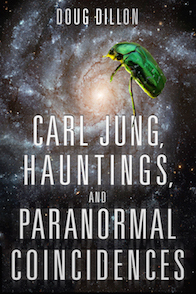 Carl Jung, Hauntings, and Paranormal Experiences (Published as a paperback, hardback and Kindle eBook)
Carl Jung, Hauntings, and Paranormal Experiences (Published as a paperback, hardback and Kindle eBook)
I’ve always been fascinated by Carl Jung and his theory of synchronicity.
His idea that there are no true coincidences, and all things are linked, increasingly fits with what I’ve experienced in recent years to an astounding degree.
And when I investigated Jung’s life, I also found how many truly strange events occurred in his life. Here was a famous psychiatrist whose paranormal experiences mirrored so much of what I was coming to understand that I had to pull it all together in book form.
Amazon.com Barnes and Noble.com Books-A-Million.com
An Explosion of Being: An American Family’s Journey into the Psychic (Published as a Kindle eBook and paperback)
The title almost tells it all. This is a true life adventure that extended to my entire family. Many years ago, right after my father died, strange things began happening.
Those events led to my lifelong pursuit of things paranormal and to the writing of this book with my wife, Barbara.
An imprint of Prentice Hall published the book across the world and Barb and I launched into an eye-opening round of radio and TV presentations.
Amazon.com Barnes and Noble.com Books-A-Million.com
Now for my fiction work:
Much of my educational career involved teenagers. And after taking early retirement, I decided to combine my experience with young people, my love for history and my paranormal understandings in a book series for young adults. The stories are action packed, with the premise being: “You Create Your Own Reality.”
This series takes place in present day St. Augustine, Florida, the oldest and most haunted city in the United States. And surprisingly, what I have found is that even older adults like what I’ve written despite it originally being designed for teens.
Below you can see larger versions of the book covers and a brief description of each plot.
 Sliding Beneath the Surface {Book I}. Published as a Kindle eBook and paperback.
Sliding Beneath the Surface {Book I}. Published as a Kindle eBook and paperback.
In America’s oldest and most haunted city, St. Augustine, Florida, teenager Jeff Golden is in trouble. Horrible dreams won’t let him sleep, and he is up to his eyeballs in terrifying, paranormal experiences.
Finally, Jeff turns to his girlfriend Carla, and Lobo, the mysterious Native American shaman, for help. But what he discovers is a lot more than he bargained for.
A ghostly presence linked to a local historic cemetery is not only threatening Jeff’s sanity but his life as well. And before he knows what’s happening, Jeff finds both himself and Carla pulled into one of the nastiest and bloody events in Florida history. It is a place from which they may never escape.
Amazon.com Barnes and Noble.com Books-A-Million.com
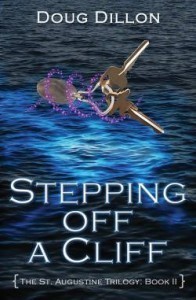 Stepping Off a Cliff {Book II}. Published as a Kindle eBook and paperback.
Stepping Off a Cliff {Book II}. Published as a Kindle eBook and paperback.
An otherworldly, evil and dangerous force infests America’s oldest and most haunted city, St. Augustine, Florida. Everyone living there, or visiting, is at risk in ways too horrible to imagine.
Standing between this invader and the people of St. Augustine are teenagers Jeff and Carla, the mysterious Native American shaman, Lobo, and Lyle, the homeless guy.
In their quest to save themselves and all the inhabitants of this ancient Florida city, Jeff and Carla uncover lost parts of St. Augustine history, push past the limits of space and time, and come face-to-face with what they come to realize are the true walking dead.
Amazon.com Barnes and Noble.com Books-A-Million.com
 Targeting Orion’s Children {Book III}. Publication due in late 2016.
Targeting Orion’s Children {Book III}. Publication due in late 2016.
In this, the final book of The St. Augustine Trilogy, the team of Jeff Golden, Carla Rodriguez, old Lobo, the Native American shaman and Lyle, the homeless guy, gather once again to join forces.
This time, though, the two teens face a paranormal presence that defies full human understanding and becomes a threat far beyond the oldest city in America where they live.
Overwhelmed by the immense responsibility they hold in their hands, Jeff and Carla make a jaw-dropping discovery that leads them in directions they could never before have imagined.
OK, and finally, as promised, here are the links to those blog post samples:
Meditation, Mindfulness and Premonitions
Haunted Lighthouse in St. Augustine, Florida
September 23, 2015
Why Does Suffering Exist?
Most likely, you’ve clicked on this article because you’re searching for a deeper understanding of life.  Well, you’ve found a friend in that worthy effort and it is my pleasure to share some of my discoveries with you.
Well, you’ve found a friend in that worthy effort and it is my pleasure to share some of my discoveries with you.
You see, I’m a Florida writer, educator, meditator, grandfather and investigator probing into the nature of reality. Through my years of careful observation, intensive research, and startling personal experiences, I’ve come to some partial conclusions about the nature of our existence and what lies beyond life as we know it.
In that light, I offer you access to my extensive blog postings about such things through this website. You can either use the categories I’ve set up or you can insert your own and see what pops up. For a few examples of such posts, see the active links at the end of this article.
Then again, if you would like to investigate some of the books I’ve written, you’ll find that information below.
 But no matter what, I wish you well on your journey of exploration. May you find what you’re looking for and how very much I hope you share what you uncover with others, including me.
But no matter what, I wish you well on your journey of exploration. May you find what you’re looking for and how very much I hope you share what you uncover with others, including me.
We’re all in this together and we very much need each other’s help. You may contact me through the link to this posting or you can use the contact form on the website. I would love to hear from you.
Now as to my books that I think you might find of value. If you’re interested, you can order any of them from your local bookstore and all the major online book outlets.
 Or, you can ask your local library to make copies available if they don’t already have them in the stacks.
Or, you can ask your local library to make copies available if they don’t already have them in the stacks.
Every library has some sort of procedure for patrons to make book purchase suggestions and they often follow through with those ideas just like the Orlando Public Library does near where I live (pictured here).
First, let me first show you my nonfiction books:
 Carl Jung, Hauntings, and Paranormal Experiences (Published as a paperback, hardback and Kindle eBook)
Carl Jung, Hauntings, and Paranormal Experiences (Published as a paperback, hardback and Kindle eBook)
I’ve always been fascinated by Carl Jung and his theory of synchronicity.
His idea that there are no true coincidences, and all things are linked, increasingly fits with what I’ve experienced in recent years to an astounding degree.
And when I investigated Jung’s life, I also found how many truly strange events occurred in his life. Here was a famous psychiatrist whose paranormal experiences mirrored so much of what I was coming to understand that I had to pull it all together in book form.
Amazon.com Barnes and Noble.com Books-A-Million.com
An Explosion of Being: An American Family’s Journey into the Psychic (Published as a Kindle eBook and paperback)
The title almost tells it all. This is a true life adventure that extended to my entire family. Many years ago, right after my father died, strange things began happening.
Those events led to my lifelong pursuit of things paranormal and to the writing of this book with my wife, Barbara.
An imprint of Prentice Hall published the book across the world and Barb and I launched into an eye-opening round of radio and TV presentations.
Amazon.com Barnes and Noble.com Books-A-Million.com
Now for my fiction work:
Much of my educational career involved teenagers. And after taking early retirement, I decided to combine my experience with young people, my love for history and my paranormal understandings in a book series for young adults. The stories are action packed, with the premise being: “You Create Your Own Reality.”
This series takes place in present day St. Augustine, Florida, the oldest and most haunted city in the United States. And surprisingly, what I have found is that even older adults like what I’ve written despite it originally being designed for teens.
Below you can see larger versions of the book covers and a brief description of each plot.
 Sliding Beneath the Surface {Book I}. Published as a Kindle eBook and paperback.
Sliding Beneath the Surface {Book I}. Published as a Kindle eBook and paperback.
In America’s oldest and most haunted city, St. Augustine, Florida, teenager Jeff Golden is in trouble. Horrible dreams won’t let him sleep, and he is up to his eyeballs in terrifying, paranormal experiences.
Finally, Jeff turns to his girlfriend Carla, and Lobo, the mysterious Native American shaman, for help. But what he discovers is a lot more than he bargained for.
A ghostly presence linked to a local historic cemetery is not only threatening Jeff’s sanity but his life as well. And before he knows what’s happening, Jeff finds both himself and Carla pulled into one of the nastiest and bloody events in Florida history. It is a place from which they may never escape.
Amazon.com Barnes and Noble.com Books-A-Million.com
 Stepping Off a Cliff {Book II}. Published as a Kindle eBook and paperback.
Stepping Off a Cliff {Book II}. Published as a Kindle eBook and paperback.
An otherworldly, evil and dangerous force infests America’s oldest and most haunted city, St. Augustine, Florida. Everyone living there, or visiting, is at risk in ways too horrible to imagine.
Standing between this invader and the people of St. Augustine are teenagers Jeff and Carla, the mysterious Native American shaman, Lobo, and Lyle, the homeless guy.
In their quest to save themselves and all the inhabitants of this ancient Florida city, Jeff and Carla uncover lost parts of St. Augustine history, push past the limits of space and time, and come face-to-face with what they come to realize are the true walking dead.
Amazon.com Barnes and Noble.com Books-A-Million.com
 Targeting Orion’s Children {Book III}. Publication due in late 2016.
Targeting Orion’s Children {Book III}. Publication due in late 2016.
In this, the final book of The St. Augustine Trilogy, the team of Jeff Golden, Carla Rodriguez, old Lobo, the Native American shaman and Lyle, the homeless guy, gather once again to join forces.
This time, though, the two teens face a paranormal presence that defies full human understanding and becomes a threat far beyond the oldest city in America where they live.
Overwhelmed by the immense responsibility they hold in their hands, Jeff and Carla make a jaw-dropping discovery that leads them in directions they could never before have imagined.
OK, and finally, as promised, here are the links to those blog post samples:
Meditation, Mindfulness and Premonitions
Haunted Lighthouse in St. Augustine, Florida

